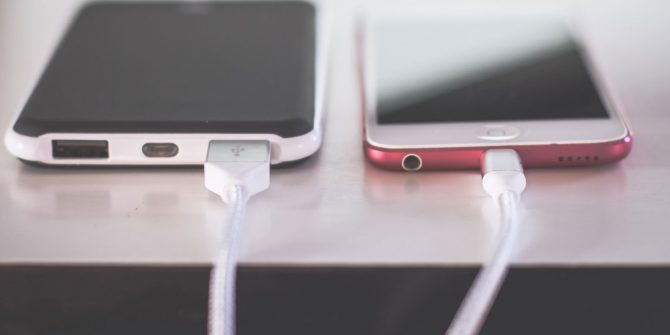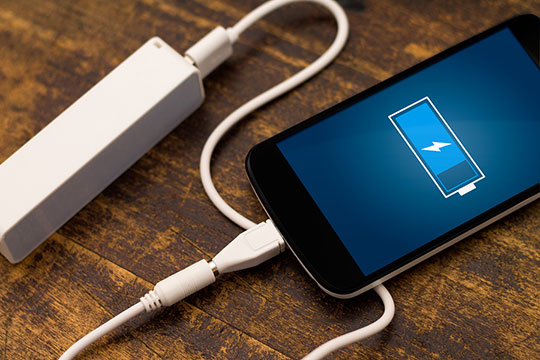For the past three years, I’ve been preaching to people to not fully charge their phones, or do it as rarely as possible. Well, all this time it seemed obvious to me (and some other battery-obsessed freaks) that you also shouldn’t let your phone discharge to 0, because it also causes harm to the battery (maybe even more than briefly letting it go to full).
Read more “When you SHOULD let your phone battery charge to 100%”The Link Between COVID-19 and Phone Batteries
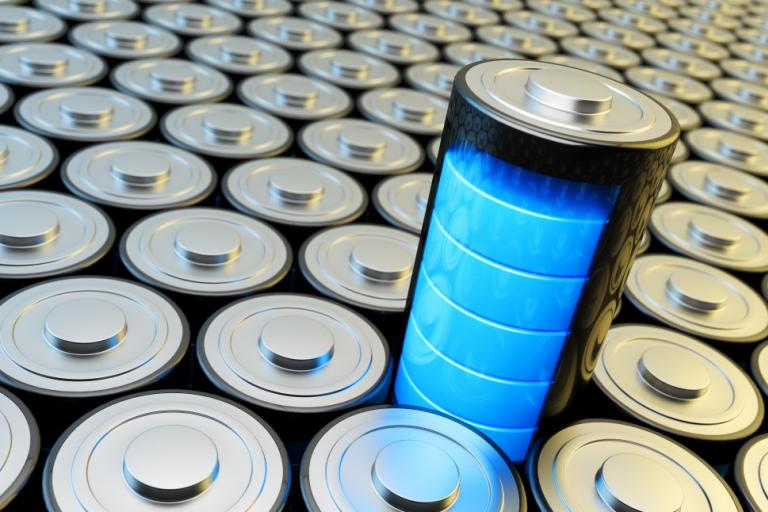
We all talk about it – there’s no point explaining what hit us earlier this year. Now, the latest version of Coronavirus is more popular than Coca Cola and Pepsi combined.
Viruses are basically pieces of software, or code – if you prefer. They run on our energy and mess with our intricate network of cells.
The world is nevertheless a complex place these days – any disruption in a supply chain can break a lot of connections. Just like our own cells, we are part of a global organism that needs us to function in order to survive.
Technology is the latest tool we have, the information it spreads is a continued contribution to many saved lives during this crisis. But information needs power to get through.
And this brings me to the topic I wanted to touch: batteries – our gadgets’ energy storage.
Crises like this brutally remind us how precious what we already own is, and at the same time how worthless everything is if we’re too sick to use it – as individuals or as the entire planet.
Batteries will also get more expensive, that’s for sure.
In a normal world, like the one only two months ago, even if you don’t care about things like sustainability, environment, pollution etc, you can been just fine for a while – you have your share of the pie that you can buy anything with – anytime, anyplace.
But – we don’t live in a normal world right now. What we have today is possibly what we’ll be having in a year, if the prophecies about an upcoming recession are true. So we must take care of our stuff and the environment, while it still works.
Charging your phone or laptop battery partially (manually or through Chargie) is one thing you can do to save your pocket technology.
Chargie only protects Android phone batteries for the time being, but in the very near future we’ll be releasing a 100W version that also works on laptops and iPhones, so our most expensive investments in technology can be work well for the foreseeable future.
A good battery may be key to your future professional success. In times like these, protecting what you have is no longer a virtue or a fad, like last year, but a necessity.
We need energy and real information to fight this crisis just like the virus needs our energy to replicate. It’s a 1:1 war we’re going to win only if we’re mindful with our resources – now and forever.
I created and spread Chargie devices on a full time basis now – yet relatively few people understand the need for taking care of their batteries. Chargie now represents a big chunk of my life and I am working continually to make it better each day.
Visit https://chargie.org to read more about Chargie and maybe purchase a pack to support this project and your phone.
image (c) graphene flagship
Why and How a 65% charged phone actually makes sense for most people
We, as a species, have evolved by eventually setting ourselves on top of the entire food chain. Nevertheless, the days of wandering for food with our empty bellies still haunt us genetically and that may be the reason why we sometimes make irrational decisions as to whether we actually need to have our supplies full or not: electric car battery, refrigerator, gas tank, stomach and our phone battery.
The scenario is simple:
- Joe wakes up. He takes a look at his phone, it’s 7am. Battery is at 75%, because he used Chargie to stop it.
- Joe eats his breakfast, sips some coffee while browsing through some news and his Facebook feed, maybe some e-mails. Battery goes down to 70%.
- Joe drives or takes the subway or bus to work, maybe he uses the power-hungry Waze, or scrolls through his Facebook feeds. Battery drops to 50%. At this level, the phone doesn’t get very hot because the internal resistance hasn’t dropped much yet, the battery has about 3.7V (ideal).
- He places his phone on the wireless charging pad at work. The pad also has a Chargie attached before it, so Joe’s Chargie app on the phone detects that it’s being charged, tests the power line, decides that it’s not the home charger, and looks for the work charger. After blinking the power a few times, it connects and quietly recharges the phone to 65%
- Joe uses his phone throughout the day, the battery oscillates maybe between 40% and 60%, but is stopped every time it reaches 65. Battery degradation: almost zero.
- After work, Joe gets back home. Before leaving work, he pumps some more power into the phone by setting Chargie to 70%.
- So maybe he goes to a bar, maybe he picks up his wife or kids from somewhere, it gets late.
- Joe goes to sleep at about 11pm. His battery, in its high 30s, is still giving him enough power without having been stressful throughout the day.
- Cycle repeats. Battery lasts forever without a hitch. Joe only takes it to 100% on occasion, which is by far less damaging than otherwise keeping it there all the time with no practical purpose.
So what’s the catch, you may ask.
Had Joe not used Chargie, the battery would’ve been at 100% or in its high 80s or 90s all day long. After a year, Joe’s battery would’ve started to die on him on long journeys or at times when he’d needed that phone. Joe would’ve been unhappy.
By only taking the charge to 70% or 60% or the lowest usable value for the day, Joe still has enough power in it and he’ll be able to use his phone at full capacity and speed for a much longer time. Should he decide to buy a new phone, the old one would still have a long fight until becoming technologically obsolete.
Joe is happy and so is the planet, because you know, recycling and reusing more are closely linked to lowered pollution levels of all kinds. And Joe’s battery is still at some 95% capacity after 5 years of usage. In a perfectly functioning phone, after an absurd amount of usage.
Bottom line: you don’t need a 100% charged phone if you work in an office where it sits on a charger all day long, anyway.
This practice just degrades your battery and the old 100% is not the same 100% after a while. The battery starts to get hot, the phone runs slower to prevent further damage by overheating, and after a year and a half you end up selling it for nothing or taking it to a repair shop. And buy a new, glorious phone that does about the same stuff the old one did, but faster – mostly because its new battery can still do it.
The 6 Factors that Influence a Phone’s Battery Life
Lithium ion battery capacities have been evolving at a steady rate in the past few years. This is driven mainly by electric cars, but also mobile phones have their share of the lithium ion market.
However, lithium resources are scarce compared to the global ambitions of Tesla, Apple or Samsung. Efforts to recycle have to be backed by efforts to preserve battery lifespan, without impacting the overall user experience.
This series of posts will talk about the different aspects that conscious phone owners have to take into account to extend their phone’s battery life, usability and recyclability.
We’ll be talking about lithium ion batteries, just because these are the norm nowadays and their environmental toll is high, which makes protecting them worth talking about.
The real life of batteries
Although in theory they should be lasting forever, in real life scenarios batteries are exposed to factors like:
- temperature
- humidity
- mechanical shocks
- electrical stress (sudden charge/discharge)
- depth of discharge
- trickle charging (keeping it constantly charged)
Most lithium ion battery manufacturers recommend from 300 to 500 charge/discharge cycles for their products. That is the conservative approach, which means they shouldn’t lose much capacity over that range.
Not all cycles are created equal.
They depend on the depth of discharge, time of charge and temperature. Lithium Ion units are very sensitive to the depth of discharge. The lower you go, the worse it gets for the battery. Some papers refer to cycles as a continuous charging process from zero to 100%. Others add mini-cycles (like from 30% to 50%) to this equation, but they’re not equal in terms of battery degradation.
The battery health is reflected by its capacity to store energy, measured in mAh (milliamp-hours).
Voltage doesn’t quite matter in this, as it is not linear. For example, a phone’s lithium ion battery starts from 3.2v (empty) and goes to 4.35v (full). But in between there are a lot of charging states that don’t correlate to the voltage directly.
On this matter, there’s no other authority online that has published more experiment results than battery expert Cadex, through their site batteryuniversity.com
They have published a graph that shows the degradation of a regular 1500 mAh lithium ion cell.
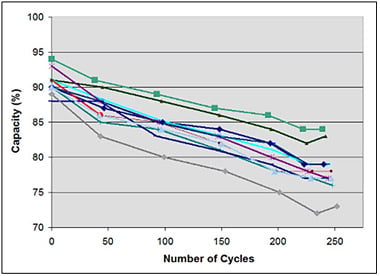
As you can see on the chart above, capacity heavily relies on the number of cycles. But these were full 0-100% cycles. The same scenario wouldn’t have happened if the cycles had been smaller.
In fact, not only those partial cycles would have helped, but the battery would have had much more combined activity than if it were cycled all the way through!
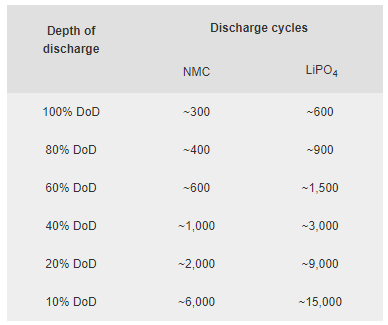
As you can see, at a shallow 10% DoD (depth of discharge) the number of cycles of a LiPO4 battery was dramatically increased. A living example are the batteries of 2nd-gen Toyota Prius, that still live on after 15 years. They’re being used regularly only in the interval of 50 to 75%.
Phone battery protection
But, you don’t have to do this to a phone. Phones are supposed to have a much shorter lifespan, but the user still has to enjoy its experience for as long as he wishes.
Practically, if you only charge a phone to 90% and then unplug, its lifespan will be increased to more than 5000 cycles before it shows any signs of degradation.
Chargie is a very useful tool to achieve that. Beyond first-hand usage, your old phone may get new life in someone else’s pocket, after you decide it’s time to upgrade it. A phone’s technology is usually good enough for 3-4 years, but a Chargie will protect all of your future phones, and much more.


